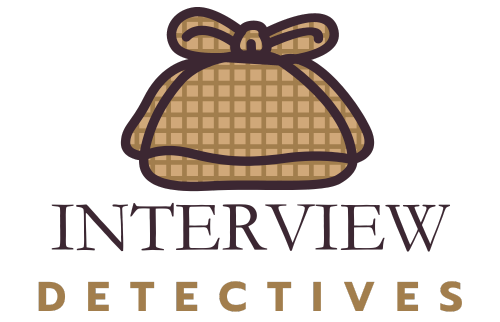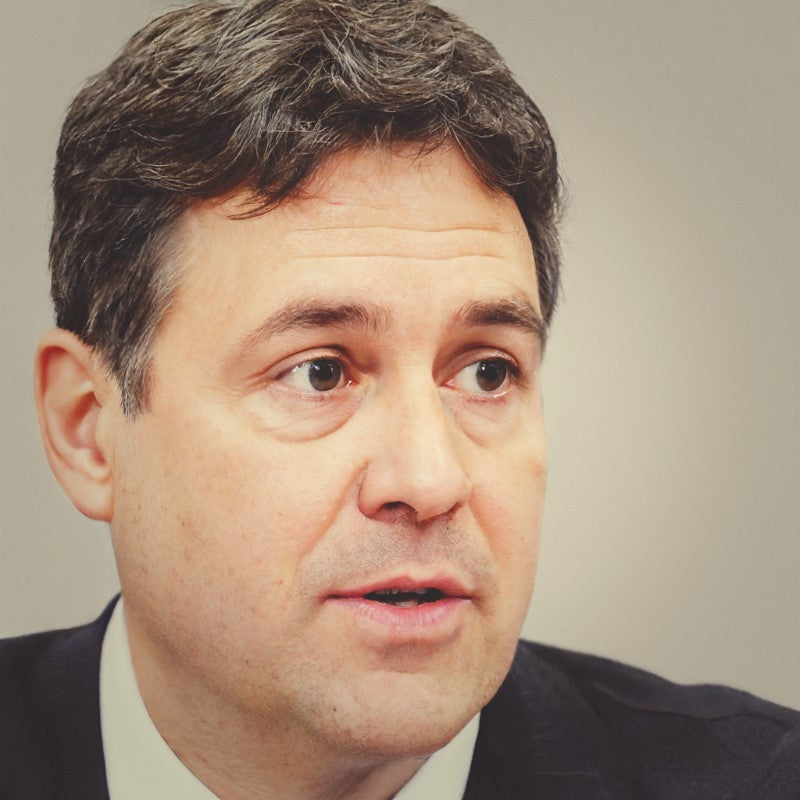The role of an Art Director requires a special blend of creativity, leadership, and technical skills. With the responsibility to steer a team towards a shared artistic vision, Art Directors are instrumental in shaping the aesthetics and overall impression of a brand or project. A career as an Art Director can be incredibly rewarding, with a median salary of around $95,000 per year in the US, and approximately £45,000 per year in the UK, according to data from Glassdoor as of 2023.
🔑 Art Director Interview Tips
Being prepared for an Art Director interview means more than just knowing the ins and outs of your design portfolio. Here are some valuable tips to help you shine:
1️⃣ Understand the Company's Aesthetic: Each company has a unique style and aesthetic. Research the company's past projects, and come prepared to discuss how your design approach can enhance their current aesthetics and align with their brand.
2️⃣ Showcase Your Leadership Style: Art Directors lead a team of creatives. Be ready to discuss your leadership and team management style, and provide examples of how you've navigated challenges and fostered collaboration in the past.
3️⃣ Demonstrate Your Design Process: Art isn't just about the end product. Discuss your design process, including how you gather inspiration, brainstorm, create, and revise your work. This will show the interviewer your thought process and dedication to quality.
⭐ Structuring Your Answers: The B-STAR Method
A well-structured answer can make a significant difference in your interview success. For this, we recommend the B-STAR method: Belief, Situation, Task, Action, Result. Your Belief sets the stage with your thoughts and feelings about the topic. Then, you'll discuss the Situation and your Task in that context. Next, explain the Action you took and, finally, discuss the Result of your actions, ideally using quantifiable metrics.
🚫 What NOT to Do in Your Art Director Interview
As much as it's crucial to know how to answer interview questions, it's equally important to be aware of what not to do in an interview:
🚫 Being Unfamiliar with the Company's Work: Show respect and genuine interest by researching the company's previous projects and aesthetics before the interview.
🚫 Lacking Examples of Your Work: As an Art Director, your portfolio speaks volumes about your skills. Make sure it's up-to-date and ready to showcase.
🚫 Neglecting Soft Skills: Technical and creative skills are vital, but don't overlook the importance of demonstrating your communication, leadership, and team management abilities.
📘 Featured Guide: Interview Success: How to Answer Art Director Questions
We want to set you up for success in your Art Director interview. That's why we've created a comprehensive guide: "Interview Success: How to Answer Art Director Questions (With Over 100 Sample Answers)". This guide provides detailed advice, strategies, and sample answers for the most common Art Director interview questions. Click here to access this invaluable resource and step into your interview with confidence.
Now that we've laid the groundwork, let's dive into the specific Art Director interview questions and sample answers...
Art Director Interview Questions & Answers
"What was the most challenging project you've worked on, and why?"
Through this question, the interviewer is trying to understand the range and depth of challenges you've faced in your career. Discuss a project that posed significant difficulties, focusing not just on the problems but on how you solved them. This will reveal your problem-solving skills, resilience, and ability to learn from challenging experiences.
Answer 1
One of the most challenging projects I've undertaken was during my tenure as the Art Director at a mid-sized advertising agency. We were commissioned to develop a complete rebranding campaign for a global company looking to update their brand image and expand their target demographic. The challenge lay in the project's sheer scope, the tight timeframe, the high expectations set by the client, and the diverse global audience we were catering to.
The project involved redefining the client's visual identity, including the logo, typography, color schemes, packaging, and promotional materials. Additionally, we were tasked with producing a series of TV spots and digital ad campaigns. The client wanted all these diverse elements ready for a globally coordinated launch within six months.
Firstly, the timeframe was demanding, considering the complexity of the project. It called for exceptional time management, team coordination, and resource allocation. I used a combination of project management tools and methodologies like agile project management to ensure that we were progressing effectively while maintaining the flexibility to adapt as the project evolved.
Secondly, there was pressure to meet and exceed the high expectations set by the client. They were looking for a fresh, modern, and innovative brand image that could appeal to a younger demographic, without alienating their existing customer base. This demanded a deep understanding of both their existing and potential customers. We conducted thorough market research, including focus groups and surveys, across different regions to understand diverse audience preferences. We combined these insights with trend analysis and competitor benchmarking to inform our design decisions.
Thirdly, designing for a global audience came with its own set of challenges. Balancing global appeal with local relevance is a delicate task. It required sensitivity towards diverse cultures, languages, and aesthetic preferences. We collaborated with local teams and cultural consultants to ensure our designs were globally appealing while being culturally appropriate.
Despite the challenges, we successfully launched the rebranding campaign on time. The response was overwhelmingly positive, with significant improvement in brand recognition and favorability, especially among the target younger demographic. The success of this project is a testament to our team's resilience, creativity, and hard work.
This project was challenging but also immensely rewarding. It taught me the importance of careful planning, continuous communication, cultural sensitivity in design, and, most importantly, how to maintain a creative vision under pressure. It honed my leadership skills and gave me confidence in managing large-scale, complex projects under tight deadlines.
Check out 4 more answers to this question...
"How do you handle the pressure of tight deadlines?"
Addressing this question effectively requires you to illustrate your ability to perform under pressure. Describe strategies you've developed to manage stress and keep your team motivated when deadlines loom. Discuss how you prioritize tasks and manage your time efficiently, ensuring high-quality outcomes without compromising on the project's schedule.
Answer 1
Handling tight deadlines is an integral part of the job as an Art Director. Over the years, I've developed several strategies that have proven to be effective in managing stress, maintaining the quality of work, and ensuring that the team stays motivated and focused.
To start with, I'm a firm believer in thorough planning and organization. At the outset of any project, I establish a clear timeline and set milestones to ensure that everyone understands what needs to be accomplished and when. This timeline isn't rigid but serves as a roadmap to guide us and allows us to anticipate potential bottlenecks and adjust accordingly. For example, while working on an ad campaign for a retail client last year, I identified key phases like concept development, design, and final approval, and aligned them with specific dates. This initial plan provided a solid framework to keep us on track.
Next, I employ effective time management and prioritization strategies. Not every task holds the same weight, so it's crucial to differentiate between 'urgent' and 'important.' I use a decision matrix to help identify which tasks need immediate attention and which ones can be deferred. This approach helped immensely when I was overseeing the rebranding efforts for a large corporation. We were able to identify critical tasks such as finalizing the logo design and implementing it across the company's digital platforms, which helped us meet the deadline while maintaining the quality of work.
Furthermore, I believe in the power of delegation. As an Art Director, it's not just about my ability to work under pressure, but how well I can distribute tasks within my team to ensure balanced workload and maintain productivity. I take time to understand each team member's strengths and assign tasks accordingly. For instance, on a recent video project, I assigned the storyboard creation to a team member who excels at conceptual thinking and illustration, while another team member who is proficient in video editing was tasked with the post-production phase.
Communication is also key, especially during high-pressure situations. Regular check-ins and updates allow for immediate course correction if required and ensure everyone is aligned. When working on the launch campaign for a major product release, we had daily stand-up meetings to discuss progress, address any issues, and recalibrate if necessary.
Finally, I prioritize the well-being of my team. Stress can hamper creativity, so it's crucial to maintain a positive and supportive environment. Encouragement and acknowledgment of hard work go a long way in keeping morale high during crunch times.
Balancing the pressure of tight deadlines while ensuring high-quality work is a challenging aspect of being an Art Director. However, with careful planning, prioritization, delegation, clear communication, and a focus on team well-being, I've been able to successfully navigate this balance in my career.
Click here to see 4 more answers to this question...
"What software and tools are you proficient in?"
This question is intended to determine your technical proficiency. Discuss the software tools you've mastered and how you've used them in your projects. This could include industry-standard tools as well as any other software that may be unique to your work. Showcase how your technical skills augment your creative capabilities as an Art Director.
Answer 1
As an Art Director, I believe that the combination of my creative vision and technical skills is what sets me apart. Over my career, I have become proficient in a broad array of tools that I've leveraged in various ways to bring my ideas to life.
At the heart of my toolkit are the Adobe Creative Suite programs. These have been my daily workhorses throughout my career. I use Photoshop for image manipulation and digital painting, Illustrator for vector-based design tasks, and InDesign for layout and typography work. For example, in a recent ad campaign for a major apparel brand, I used Photoshop to edit the product shots, Illustrator to develop vector graphics for the layout, and InDesign to combine these elements into a cohesive and visually striking ad layout.
For 3D design tasks, I'm proficient in Autodesk's Maya and 3DS Max, which have allowed me to work on projects that require 3D elements. For example, while working on an animated commercial, I utilized Maya for character modeling and animation, adding a dynamic and visually engaging element to the project.
In terms of video editing, Adobe Premiere Pro and After Effects are my tools of choice. These tools were instrumental in a short documentary project where I managed post-production, using Premiere Pro for the video editing and After Effects for creating special effects and motion graphics.
Beyond these standard tools, I'm also comfortable with prototyping and UX design tools like Sketch, Figma, and Adobe XD. I have found these tools increasingly important in the age of digital media and used them extensively while developing user interfaces for mobile apps and websites. For instance, I used Figma for wireframing and designing the UI for a wellness app, working closely with the development team to ensure the design's usability and aesthetics.
Lastly, I'd like to note that while these tools are a crucial part of my work, they are just that—tools. It is the creative vision and understanding of design principles that guide their use. I see these software programs as the means to translate my ideas into reality, and I'm always open to learning new tools that could help in that process. I understand that the art of direction combines creativity, communication, and technological understanding, and I am confident that my proficiency in these tools supports my overall abilities as an Art Director.


